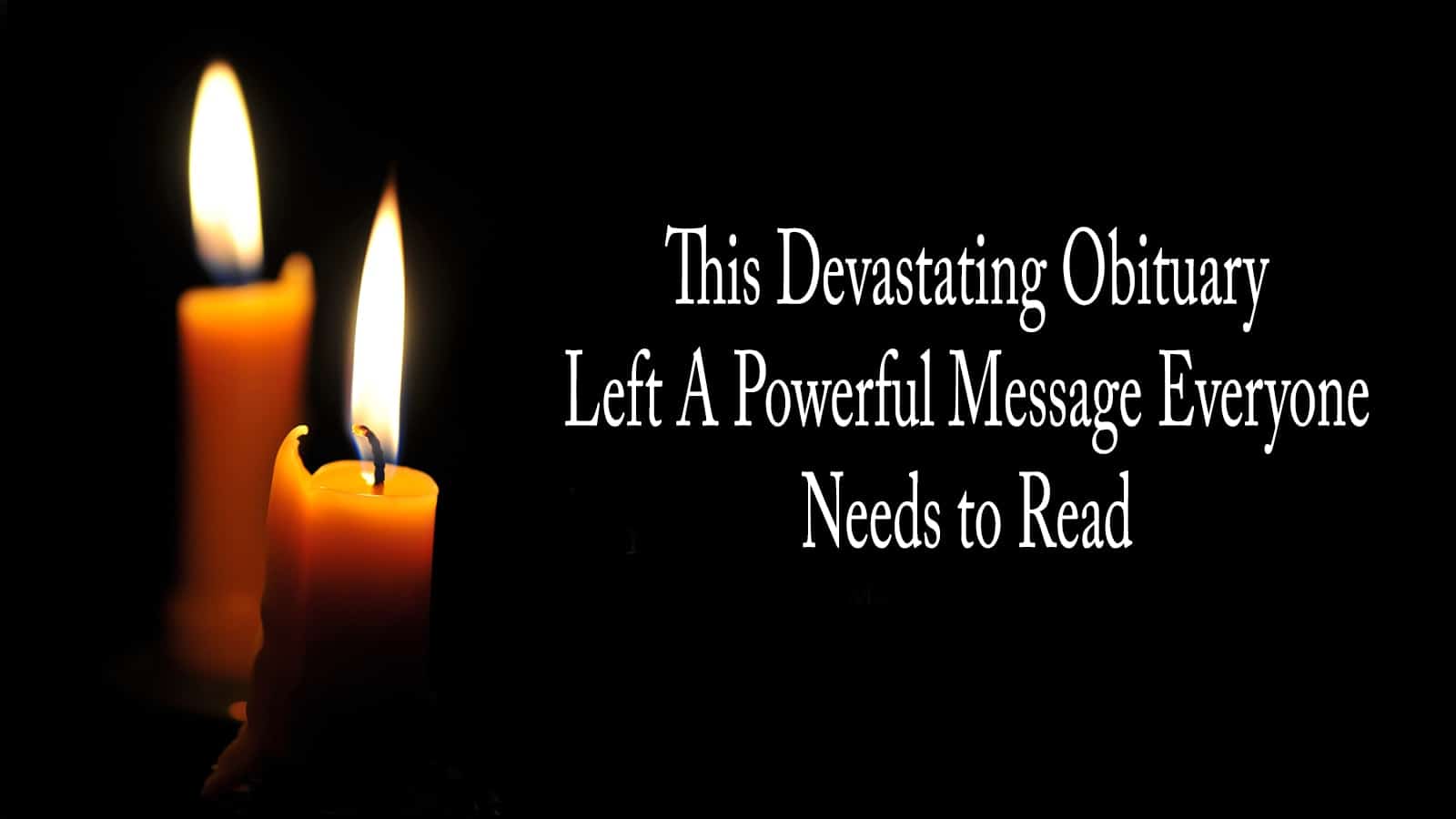The obituary of a young mother who lost her life to an opioid addiction has struck a chord in people’s hearts all over the globe. Many people look down upon those with an addiction. The truth is, only the person suffering and their family understands the horrors of trying to beat the addiction.
Unfortunately, doctors and pharmaceutical companies support this crisis directly (even if not intentionally). The people affected are just average folks trying to get relief from debilitating pain. It isn’t their fault that these drugs have been designed to cause such an addiction. To give you an idea of just how widespread opioid addiction has become, here are some eye-opening statistics from the National Institute on Drug Abuse:
Every day, more than 115 people in the United States die from an opioid overdose. Opioids are a highly addictive class of painkillers such as methadone, oxycodone, Vicodin, heroin, and fentanyl. The misuse of these drugs has caused an epidemic that affects every aspect of society, from public health to economic well-being. The Centers for Disease Control and Prevention estimates that prescription opioid misuse in the United States costs $78.5 billion a year. This amount also accounts for healthcare costs, rehab, lost productivity, and law enforcement involvement.
What caused the opioid crisis?
In the late 1990s, healthcare providers began to prescribe opioids more frequently. Pharmaceutical companies reassured doctors that patients would not become addicted. Unfortunately, pharmaceutical companies either lied or grossly underestimated how addictive opioids could be. Thereafter, many people developed an addiction to them.
Overdose rates steadily increased. In 2015, more than 33,000 Americans died from an opioid overdose. The causes included prescription opioids, heroin, and fentanyl – a powerful synthetic opioid. That same year, an estimated 2 million people in the U.S. suffered from substance abuse disorders related to prescription opioid pain relievers. Additionally, 591,000 suffered from a heroin use disorder.
Facts about the opioid crisis
- About 21 to 29 percent of patients misuse prescribed opioids for chronic pain.
- Between 8 and 12 percent of patients develop an opioid use disorder.
- An estimated 4 to 6 percent who misuse prescription opioids also use heroin.
- About 80 percent of people who use heroin first developed an addiction to prescription opioids.
- Opioid overdoses increased by 30 percent from July 2016 through September 2017 in 52 areas throughout 45 states.
- The Midwest saw a 70% increase in opioid overdoses from July 2016 through September 2017.
- Opioid overdoses in metropolitan areas increased by 54 percent in 16 states during this same timeframe.
These devastating statistics have prompted Congress to add an additional $500 million to the NIH budget. They hope to find solutions to the opioid epidemic. The government has focused its efforts recently on improving treatments for opioid addiction. Three medications are currently FDA-approved specifically for opioid use disorders. Also, enhancing pain management is a top priority.
The Obituary Everyone Needs to Read
30-year-old Madelyn Linsenmeir died of an opioid overdose on October 7 of this year (2018). Her sister wrote a heartfelt obituary for her in The Burlington Free Press, and it has since gone viral because it shows how devastating opioid addiction really is for the sufferer and their loved ones.
The obituary reads:
“Our beloved Madelyn Ellen Linsenmeir died on Sunday, October 7. While her death was unexpected, Madelyn suffered from drug addiction, and for years we feared her addiction would claim her life. We are grateful that when she died, she was safe and she was with her family. …
Madelyn was a born performer and had a singing voice so beautiful it would stop people on the street. Whether she was onstage in a musical or around the kitchen table with her family, when she shared her voice, she shared her light. She was a member of FolKids of Vermont, a dance and musical troupe that toured the world. Maddie visited Russia and Thailand with the group and, as part of their exchange program, hosted kids from other countries at home in Vermont. She loved to ski and snowboard, and she swam on the YMCA swim team, winning medals at the New England regionals.
When she was 16, she moved with her parents from Vermont to Florida to attend a performing arts high school. Soon after she tried OxyContin for the first time at a high school party, and so began a relationship with opiates that would dominate the rest of her life.
It is impossible to capture a person in an obituary, and especially someone whose adult life was largely defined by drug addiction. To some, Maddie was just a junkie — when they saw her addiction, they stopped seeing her. And what a loss for them. Because Maddie was hilarious, and warm, and fearless, and resilient. She could and would talk to anyone, and when you were in her company you wanted to stay. In a system that seems to have hardened itself against addicts and is failing them every day, she befriended and delighted cops, social workers, public defenders and doctors, who advocated for and believed in her ’til the end. She was adored as a daughter, sister, niece, cousin, friend and mother, and being loved by Madelyn was a constantly astonishing gift.”
Next, Maddie’s sister describes her relationship with her son:
Maddie loved her family and the world. But more than anyone else, she loved her son, Ayden, who was born in 2014. She transformed her life to mother him. Every afternoon in all kinds of weather, she would put him in a backpack and take him for a walk. She sang rather than spoke to him, filling his life with song. Like his mom, Ayden loves to swim; together they would spend hours in the lake or pool. And she so loved to snuggle him up, surrounding him with her love.
After having Ayden, Maddie tried harder and more relentlessly to stay sober than we have ever seen anyone try at anything. But she relapsed and ultimately lost custody of her son, a loss that was unbearable.
During the past two years especially, her disease brought her to places of incredible darkness, and this darkness compounded on itself, as each unspeakable thing that happened to her and each horrible thing she did in the name of her disease exponentially increased her pain and shame. For 12 days this summer, she was home, and for most of that time she was sober. For those 12 wonderful days, full of swimming and Disney movies and family dinners, we believed as we always did that she would overcome her disease and make the life for herself we knew she deserved. We believed this until the moment she took her last breath. But her addiction stalked her and stole her once again. Though we would have paid any ransom to have her back, any price in the world, this disease would not let her go until she was gone.
After giving information regarding Maddie’s surviing family members, the obituary encouraged donations made to the Turning Point Center, a place where Maddie had spent time and received care and support: turningpointcentervt.org.
The obituary went on to say:
If you yourself are struggling from addiction, know that every breath is a fresh start. Know that hundreds of thousands of families who have lost someone to this disease are praying and rooting for you. Know that we believe with all our hearts that you can and will make it. It is never too late.
If you are reading this with judgment, educate yourself about this disease, because that is what it is. It is not a choice or a weakness. And chances are very good that someone you know is struggling with it, and that person needs and deserves your empathy and support.
If you work in one of the many institutions through which addicts often pass — rehabs, hospitals, jails, courts — and treat them with the compassion and respect they deserve, thank you. If instead you see a junkie or thief or liar in front of you rather than a human being in need of help, consider a new profession.
We take comfort in knowing that Maddie is surrounded by light, free from the struggle that haunted her. We would have given anything for her to experience that freedom in this lifetime. Our grief over losing her is infinite. And now so is she.”
Closing Thoughts
The Centers for Disease Control and Prevention (CDC) says that 25% of people who have a long-term prescription for opioids for non-cancer pain will develop an addiction. Around 72,000 people in the US died of an opioid overdose in 2017. This means the rate of deaths from overdose has more than doubled since 2015. Clearly, efforts to treat opioid addiction need to increase dramatically so that no one has to suffer like Madelyn did.
We hope this obituary and the statistics about the opioid epidemic will encourage those struggling to get help, or at least for people to become more aware of this growing issue. The people who become addicted to opioids are everyday people. They are mothers, fathers, daughters, sons, brothers, sisters, and friends. They are not criminals. Rather, the system that failed them should be held more accountable for its actions.


















